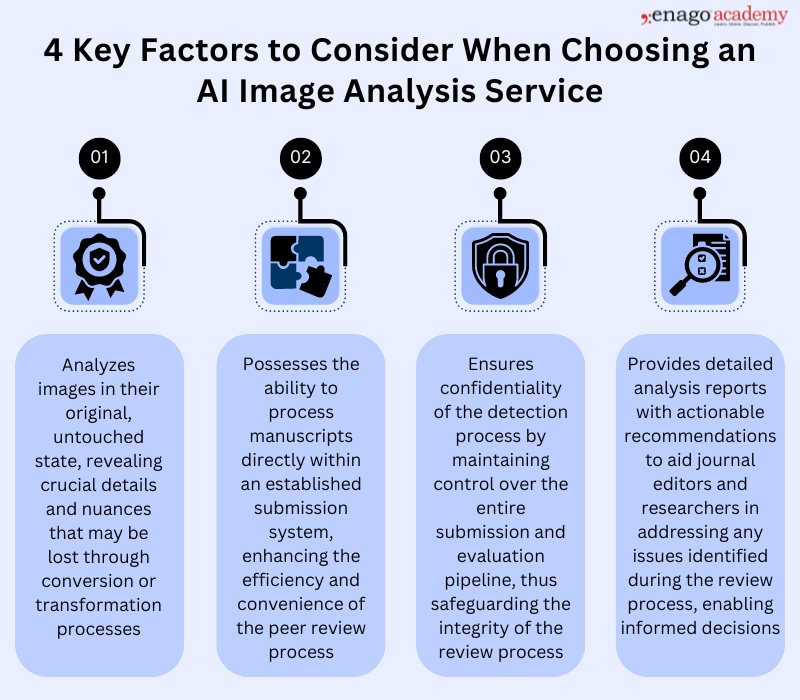AI vs. AI: How to detect image manipulation and avoid academic misconduct

The scientific community is facing a new frontier of controversy as artificial intelligence (AI) is being misused to generate manipulated image. In a shocking turn of events, a prestigious peer-reviewed journal, had published an article with anatomically incorrect images that were later revealed to be generated using AI. This unethical integration of AI in image manipulations adds to the already existing problem of image manipulation in research papers.
Rising Issue of Image Manipulation in Scientific Research
A leading image data integrity analyst revealed that the percentage of manuscripts flagged up for image-related problems range from 20 to 35%.
Visual representation of research data and findings is an integral part of scholarly communication. Inappropriate duplication and fabrication of images with such accelerating speed threatens the credibility of research outcomes. The progress in the field of AI has led to the development of generative models such as Deepfake. These models are further being used to compromise image integrity in scientific research.
Maintaining the accuracy of images in scientific research goes beyond mere acknowledgment. It is about prioritizing the essence of upholding it by adapting to the challenges of the changing times. By prioritizing image integrity, researchers can uphold the fundamental principle of transparency. It is essential for advancing knowledge and credibility in scientific research.
Consequences of Image Manipulations
Reports of image manipulations erode the overall trustworthiness of scientific process. When public and the scientific community lose faith in the reliability of published research, it undermines the credibility of science.
1. Risk to Reputation
A researcher’s standing in the scientific community is intrinsically tied to the integrity of their work. When image irregularities surface in published papers, it casts a shadow of doubt over the entirety of the researcher’s body of work.
2. Institutional Consequence
Image integrity issues also impact the research institutions where the work was conducted. It may tarnish the institution’s reputation, undermining its ability to attract top talent and secure resources for future research projects.
3. Retracted Publications
The discovery of manipulated or duplicated images may lead to the retraction of an already published paper. It not only undermines the researcher’s credibility but also raises concerns about the journal’s screening process. It tarnishes the overall reliability of the scientific record.
4. Legal and Financial Burdens
Intentional image manipulation by researchers may be classified as research misconduct. The researcher may have to face legal action, fines, and the loss of funding. The costs associated with investigating these issues and retracting publications can also be substantial, diverting valuable resources away from productive research activities.
5. Misguided Future Research
It’s possible that another researcher might rely on papers containing manipulated images. This can impact the future of research by wasting time and resources. Ultimately, this could hinder overall scientific progress in that field.
6. Ethical Impact
The manipulation or duplication of images in scientific research is a breach of the ethical principles. It violates the core values of honesty, transparency, and rigor that are essential for maintaining public trust and advancing knowledge.
Existing Efforts to Counter Image Manipulation
To combat this growing problem, organizations and individuals have been working tirelessly to detect and expose cases of image manipulation.
Community-based initiatives such as PubPeer and Retraction Watch have emerged as important platforms for surfacing and discussing potential instances of suspicious image manipulation, as well as other problematic publishing practices. They have often been starting points for cases that have resulted in wider investigations and even retractions.
At an individual level, dedicated experts like Elisabeth Bik have made it their mission to investigate signs of scientific fraud. She particularly focuses on issues like image manipulation in published literature. Regulatory bodies, such as the Office of Research Integrity (ORI) in the US, play a vital role in addressing cases of image fabrication.
Evolving Nature of Image Manipulation Techniques
As image editing technology continues to advance, the techniques to manipulate visual content are becoming sophisticated and difficult to detect. Subtle changes, such as the seamless blending of elements or the alteration of lighting and shadows, can often evade the eye of a human reviewer.
Pros and cons of Image Manipulation detection AI tools
 Power of AI in Detecting Image Manipulation
Power of AI in Detecting Image Manipulation
As the scientific community grapples with the growing issue of image manipulation, a transformative solution has emerged in the form of advanced AI based services. These services combine the cutting-edge algorithms with human expertise to revolutionize the way journals and researchers approach the detection of fraudulent imagery, automating and streamlining the process to save valuable time and resources.
A study revealed that an AI tool was able to add 41 to the total of 115 instances of image fraud that had been missed during manual screening. Many leading journals have already taken proactive steps to leverage these revolutionary services, and have noticed an increase in the number of flagged papers for image manipulation.
By embracing the power of AI, the scientific community can streamline the process of detecting and addressing image fraud, ultimately safeguarding the credibility and trust that are the cornerstones of scientific progress.
Factors to Consider in Choosing an AI-based Image Analysis Service
When selecting an AI-based image service, it’s crucial to ensure that it incorporates a significant level of human expertise. Human expertise is essential in interpreting nuanced details and contextual information that AI may overlook. Moreover, human validation adds a layer of accountability and trust to the process. It reassures stakeholders that the results are credible and unbiased.
 By seamlessly integrating a comprehensive image analysis service that addresses these key factors, the scientific community can take a significant step forward in safeguarding the integrity of scientific research and upholding the highest standards of rigor and transparency.
By seamlessly integrating a comprehensive image analysis service that addresses these key factors, the scientific community can take a significant step forward in safeguarding the integrity of scientific research and upholding the highest standards of rigor and transparency.
As technological innovations continue to rapidly transform the research landscape, it is important that researchers, institutions, funders, and policymakers, come together to develop and promote a culture of research integrity. By utilizing the power of technology responsibly and ethically, we can ensure the credibility, reliability, and transparency of scientific discoveries.
Frequently Asked Questions
AI can help detect image manipulation by identifying subtle manipulations that might miss human eyes, and automating the detection process to quickly flag suspicious images for further review. By integrating AI into the peer review process for image manipulation, the scientific community can uphold academic integrity.
Image manipulation is a concern in research as it raises questions on the credibility of the research outcomes, weakens trust in science among public, leads to retractions of papers that negatively impacts the reputations of research institutions, misdirects future research that may be based on the inaccurate claims made, and compromises the research integrity.
Researchers can avoid academic misconduct with images by getting familiar with ethical guidelines for image handling in scientific literature, using original and unaltered image, and using AI-based services to screen images for detection of potential manipulation before submitting their papers.
The future of AI in detecting image manipulation looks promising. Continued advancements in AI algorithms will enhance the ability to detect sophisticated manipulation techniques. Integration of AI tools into existing manuscript submission and peer review workflows will streamline the detection process and improve efficiency. Development of AI service with human oversight will ensure nuanced and contextually accurate analysis.









Amazing articles and writing. The choice of topics is very apt according to the current trends.
Very revealing.